Scoop
SPRING 2023
Discover Your DAHLIA
We're got our biggest ever range of dahlias, find your new favourite with our quiz
Entering The World Of GROWING ORGANIC
Good for you, and the environment
Weathering Climate With RESILIENT GARDENS
Strengthen your garden and its durability to survive our ever-changing weather


ROF T H E LO V E OF P L STNA FREE ISSUE
Only the best plants graduate from our nursery.
At Kings, we lovingly grow a selection of plants in our own local nurseries. We hand-pick the best varieties for success in Auckland gardens, all backed with our sure to grow guarantee to help you grow well.

N URSERY GROW N
SPRING 2023 Contents
We’re proud to be plant-people, but we’re chuffed to find out our customers think we’re as good with people as we are plants. So good that we’ve won our third gold medal in the Reader’s Digest Quality Service Awards. Thank you to everyone who voted for us. We are so pleased we have been able to help so many Kiwis grow well.

The Staples What's Happening ........................... 4 Catch up on all things Kings and what's happening this spring Gardeners’ Mail ................................ 6 Celebrating your garden success stories Plant Doctor ...................................... 8 Your questions, our expert advice What We’re Loving 10 Some of our top spring plants Meet Our Team ............................... 24 Meet a handful of our passionate staff Kings in The Community ............. 30 What our partners have been up to Indoor Plants 34 Tips and repotting advice for spring Little Growers Corner .................... 38 Beanstalk Castles & a chance to WIN! Seasonal Recipes............................ 40 Try our delicious seasonal recipes Spring Checklists ........................... 42 What to plant and tend to this spring The Features Spring Planting For The Bees ........ 12 Our top spring flowers for bees The Beauty of Lavender 13 Ignite your passion for lavender Starting Your First Veggie Garden 16 Everything you need to know The World Of Growing Organic 19 Good for you, and the environment A Beginner's Guide to Tomatoes .. 21 Top varieties and top tips Resilient Gardens .......................... 26 Weathering Auckland's conditions Love Your Roses 28 Care tips for rose lovers Summer Bulbs ................................ 31 Welcome the sunshine Discover Your Dahlia Quiz .......... 33 Find your new favourite ★ ★ ★ 2 0 2 1 • Votedby ★ ★ 0 2 • Gar Gar
WHAT’S HAPPENING At Kings
Embrace the essence of spring with us – a time of transition and rejuvenation. At Kings, we’re all about progress and embracing the evolving seasons.
Spring signifies an opportunity for growth, and we’re here to make nurturing that growth easier for everyone. We’re bringing back our Click & Collect service, because we’re committed to connecting you with plants as quickly as possible. We’re also introducing our Grow Well Combos – perfect product pairings to make growing easier, and more cost-effective.
With spring comes loads of exciting new arrivals. Each week brings more plants into our stores. We’re so excited for our spring arrivals, including hydrangeas, tomatoes and our beautiful range of dahlia varieties. We’ve got lots of pollinator-friendly plants arriving through spring, so keep an eye out for lavender, manuka, snapdragons and more.

In this issue of Scoop, you’ll read all about lavender, veggies, roses, summer bulbs and more, as well as our usual staples. After so many rainy days, the need to re-
energise our gardens is shared by our staff too, and we’ll share some tips to help you make it happen. We’ll introduce you to some of our expert team, and share what some of our community partners have been up to recently. Plus we’ve included a couple of our favourite recipes which can be made with delicious seasonal produce.
As the sun returns and spring flowers grace our gardens again, join us in bringing some muchneeded colour back into our lives. So sit back, enjoy the season, and grow well with this issue of scoop.
The Kings team.
4
HERE'S THE SCOOP ON What's New
Click & Collect
We’re always looking for ways to connect you with plants as quickly as possible. For some, this means enjoying the convenience of selecting plants from the comfort of your own home and picking them up just a few days later.
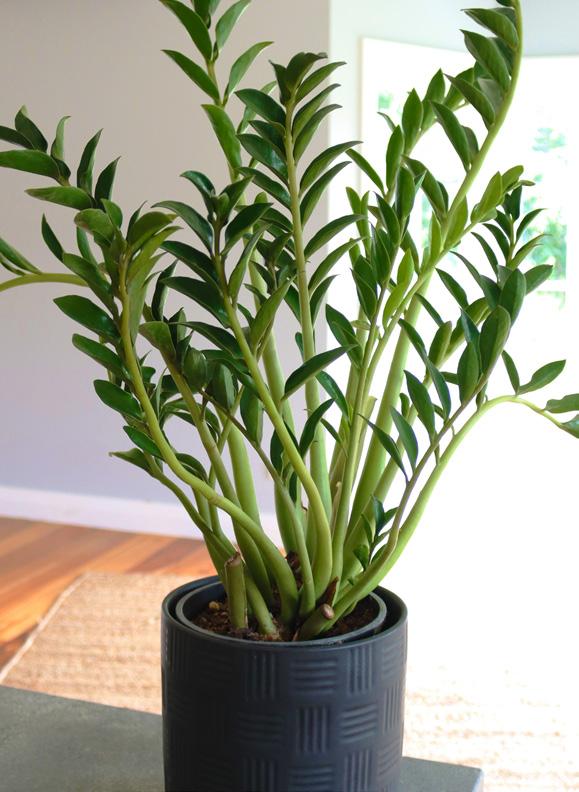
The arrival of spring brings lots of new season plants, and we’re excited to bring back a favourite from last year - Click & Collect.
We’ve made a number of changes to our Click & Collect service. This includes shorter collection timeframes, the convenience of Pay Now features from select major banks, and an improved browsing experience, allowing you to explore and shop from a wide range of plants and other items available at your chosen local store.
Keep an eye out for the Click & Collect option in the online shopping area of our website.
Click & Collect
Please see checkout for collection
Grow Well Combos
Introducing our new Grow Well Combos, which are convenient, cost-effective, and have been expertly curated to help you grow well.
We're committed to offering you an extensive range of products that cater to your needs. We understand that it can sometimes be difficult to know what’s best to help your plants grow, and that the best solution can comprise of more than just one product.
Supertunia Vista Petunias
We have a selection of striking new colours joining our Supertunia Vista range this spring. With vigorous growth and mounding habits, these petunias are beautiful as both fillers and spillers. From bright indigo and deep scarlet, to midnight purple and vibrant yellow, there are so many stunning colours to choose from.
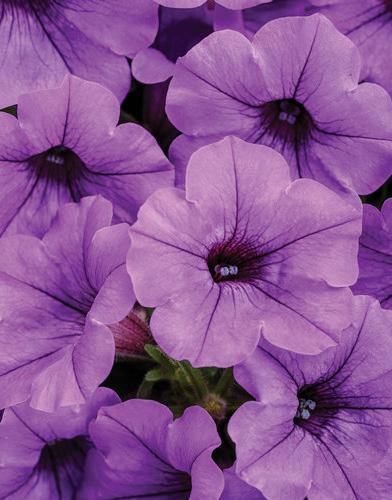
To help reduce some of the stress from choosing the right products, we’ve put together a special range of combos. They are the perfect mix of products to help address a wide range of everyday gardening situations.
Each combo includes a product range we’ve carefully selected for you and includes the right fertilisers, pest control, sprays and more. By choosing a combo, you not only save time but also enjoy an exclusive combo discount.

Mini
ZZ
GROW WELL COMBO
Ideal for those smaller spaces, this dwarf version of the popular ZZ Plant will make a beautiful addition to your houseplant collection. Its foliage boasts a gracefully curved appearance, distinguishing it from its standard counterpart, while its growth remains nice and compact. EDAM T O HELP YOU GRO W LLEW 5
CELEBRATING YOUR SUCCESS Gardeners’ Mail
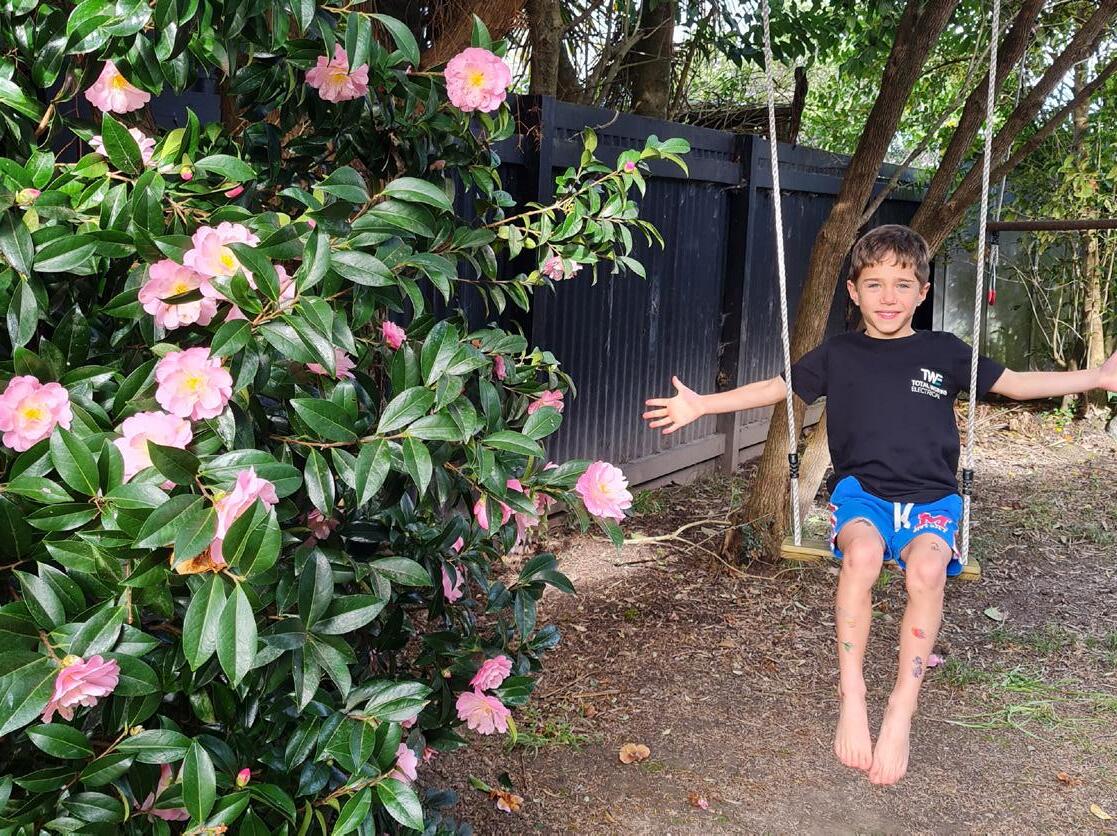
Treats For Friends
I’ve shopped at Kings for many years, but have recently adopted rabbits so thought I’d try my hand at growing herbs for them myself. I visited your stores for some advice as it was my first time growing edibles, and your staff were super helpful. They helped me choose the right herbs for my rabbits, and recommended the perfect tub for growing them in. Now, I’ve got a rabbit-friendly snack corner right on my deckand they are loving it!

I am so grateful for your time and expertise. The herbs are doing well, and my bunnies are munching happily.
-Rowan
Thriving Spaces
I absolutely trust in Kings for all my gardening questions. I visit my local store frequently with either a photo or a cutting of my troubled plant and the advice I get from staff is brilliant and spot on. It was Kings who diagnosed the borer on my orange tree and recommended solutions to fix it, Kings who showed me how to look after my house plant and Kings who recommended the best privacy screening hedge. I really value the time staff take to help my garden thrive.
- Phoebe
BE IN TOWIN A $50 KINGS GIFT CARD
6
Sprouting New Interests
Thank you Kings for your generous support for the start of what we hope to be a wonderful project and learning experience for our Newest New Zealanders.

Our five-year-olds were very taken and lots of touching and sniffing going on.
There was much enthusiasm and such excitement as what was raised bed with a few plants that had not seen much love! Transform into a fabulous veggie patch and our residents getting to see plants they knew and some they didn't.



Post: PO BOX 31002, Milford, 0741 Email: scoop@kings.co.nz or message us on Facebook or Instagram Every published story wins, so send us your gardening success stories!
7
- Refugee Education Centre
ASK OUR Plant Doctors
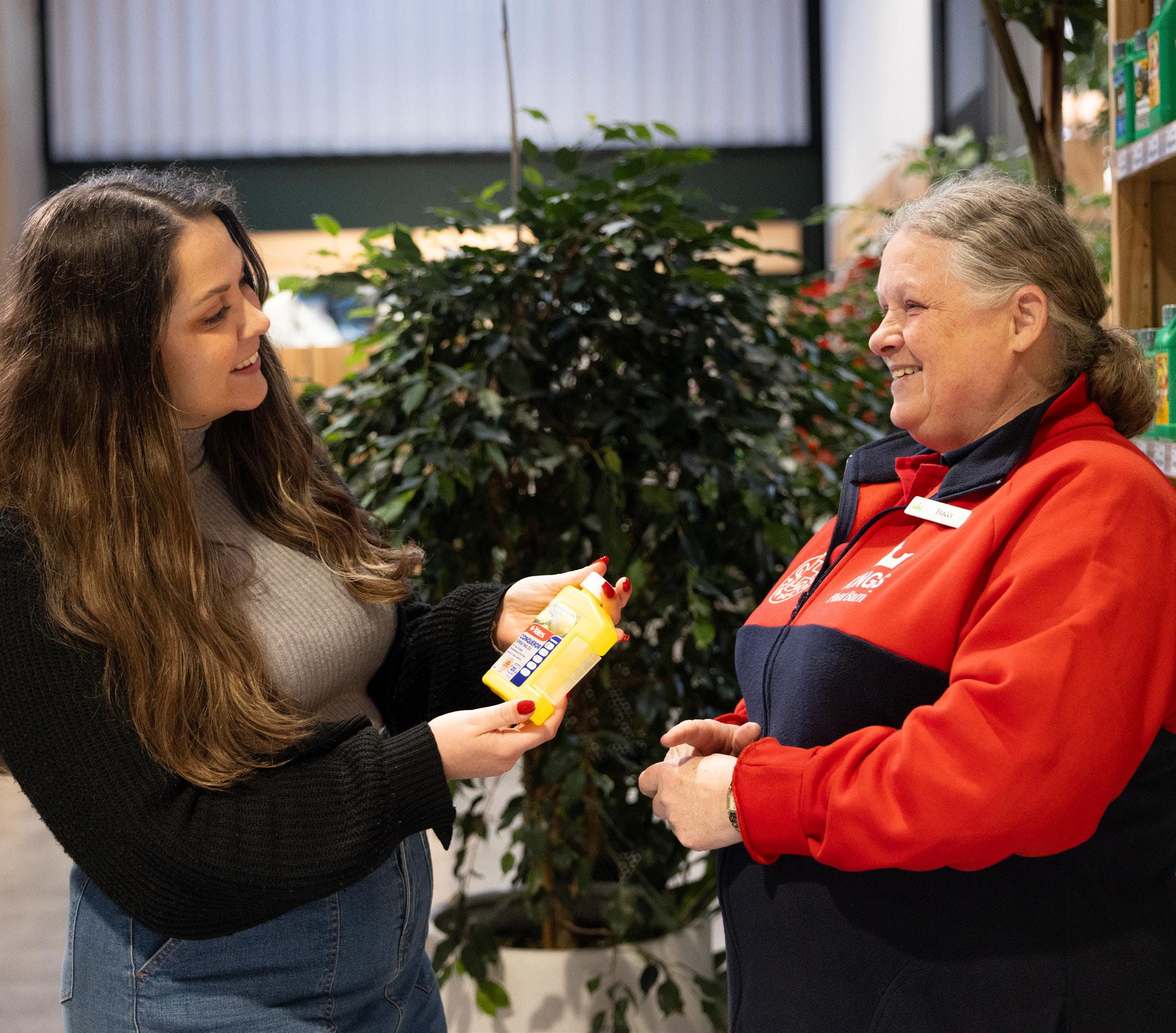
Your local questions, our expert answers.
PLANT D OCTOR
Hi Plant Doctor,
My garlic chives are covered with waxy little black bugs - what are they and what can I do?

- Thanks, Maxine
Hi Maxine,
Those pesky little bugs are Black Aphids. They can be dealt with in several ways. Hose them off with a blast of water or squash them with your fingers.
Alternatively, start spraying with Yates Nature’s Way Vegie Insect Spray. You will need to spray every four days.
8
Kia ora Plant Doctor,
We have a small lemon tree that was planted 2 years ago. It is about chest height. Up until recently, it was very healthy and happy, and now suddenly all of the new and recent leaves are being eaten. Do you know what it is, or what we can do? We would really appreciate any help. There are tiny worms.
Thank you for your Plant Doctor enquiry,
The pest that you have is a tiny little caterpillar and it likes to eat the new growth tips of citrus. I would recommend that you prune off all the infected tips of the plant and throw them into the rubbish (not compost). Start spraying regularly with Grosafe BioNeem throughout the year to keep insects (including the hungry caterpillar) under control.
Hey Plant Doctor,
My peach trees have just started showing signs of leaf curl, and have small fruit on them already. What can I spray the trees with now please?

- Thanks, Marie
Hi Marie,
At this time of the year, the temperatures warm up and fungal conditions start to affect plants. With small fruit appearing on your tree, I would recommend spraying with Grosafe FreeFlo Copper now and then spraying again in two weeks' time. All fruit trees should be spayed regularly throughout the year to control pests and diseases.

PLANT D OCTOR Got a tricky plant question? Ask instore or try our online Plant Doctors at plantdoctor.co.nz 9
SPRING PLANTS We’re Loving
Fill your outdoor areas with our favourite edibles and flowers perfect for pots and garden beds this spring.
Raspberries

From their irresistible taste to their easy-care nature, there’s so much to love about raspberries. Many people don’t realise that as well as the traditional red varieties, there are also white and black raspberries - yum! To keep your raspberries growing well, choose a sunny spot with at least 6 hours of sun a day, provide welldraining soil rich with organic matter, and stake at planting time.
Basil
This versatile herb is delicious in a variety of dishes, from pizzas to pesto. Not only does basil elevate the flavour of tomatoes when grown together, but it also helps keep pesky pests at bay - the perfect companion plant.

Trachelospermum jasminoides, commonly known as star jasmine, will bring the smell of the tropics to your garden. With its glossy green foliage and delicate star-shaped blooms, this beautiful vine is a popular choice amongst gardeners. We love how versatile star jasmine can beit can be grown up walls, on pergolas, trailed along the ground, or even in containers.
 Star Jasmine
Star Jasmine
10
Hydrangeas
With their giant clusters of blooms in white, pinks, purples and even blues, hydrangeas are a classic flowering shrub that never go out of style. Just find a spot with partial shade and well-draining soil, and your hydrangeas will flourish with minimal maintenance. These graceful blooms will bring a touch of elegance to your garden.
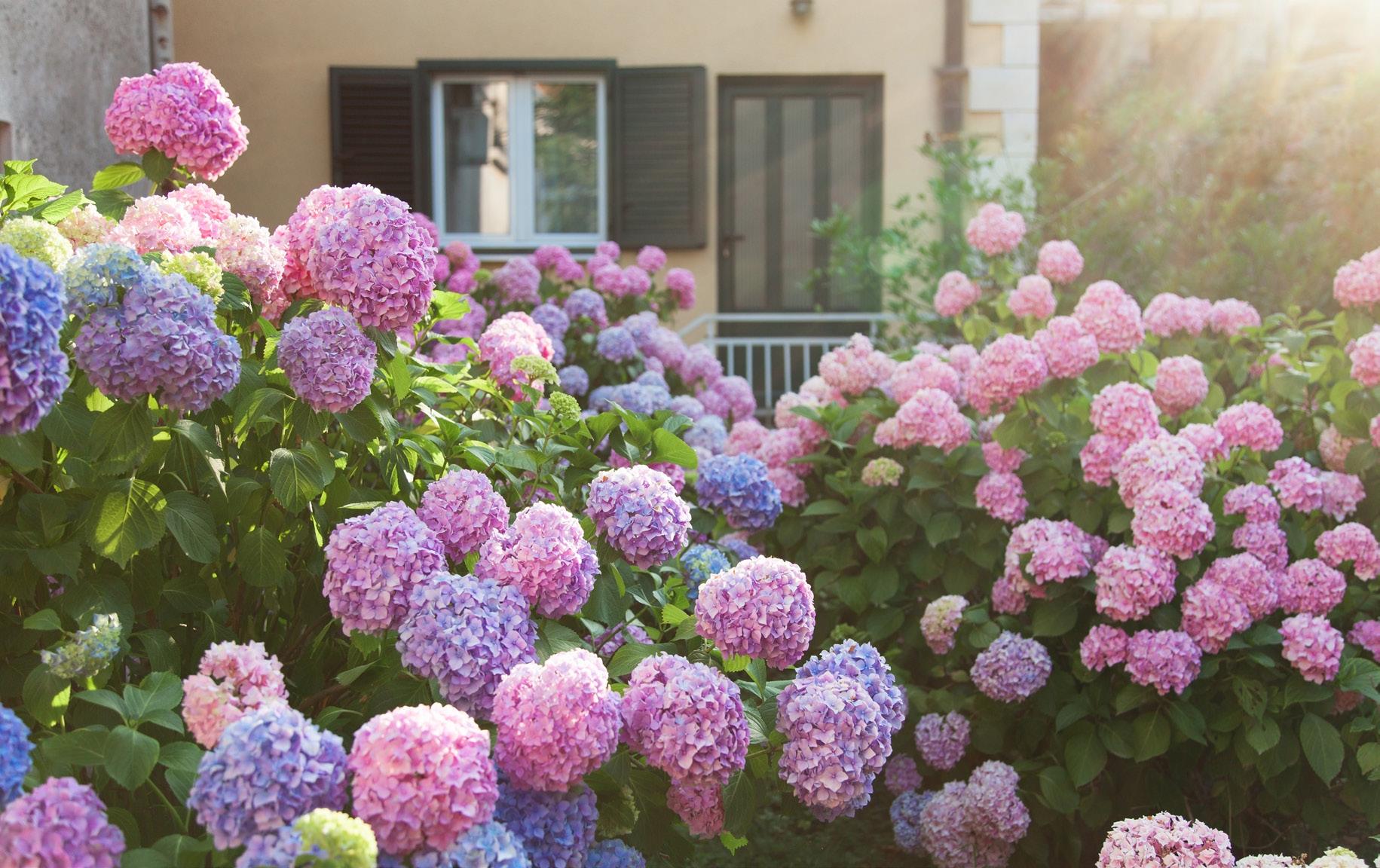
Bringing a burst of flavour to your garden, passionfruit is a tropical fruit that grows well in the Auckland climate. Passionfruit vines are available for planting in spring and summer and should be planted against a support structure to enable the vines to climb. They thrive when grown against a warm, north-facing wall in a raised garden bed. Our most popular variety is Black Beauty, which is a rapid grower and a prolific fruiter, making it perfect for beginners.
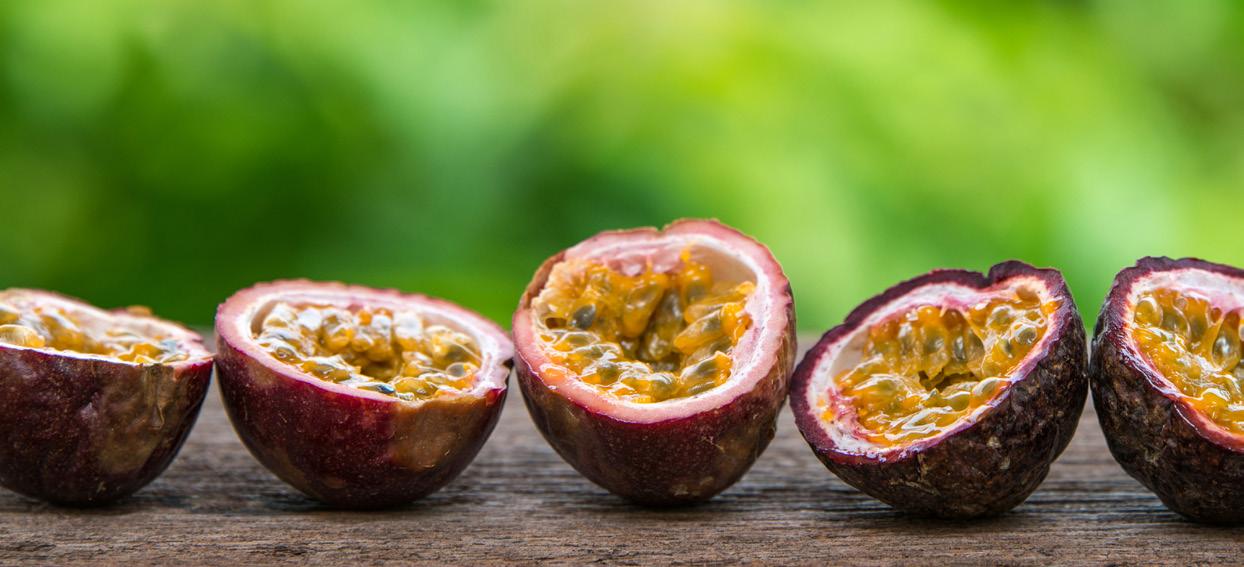
Petunias
Colourful petunias are a summer favourite, brightening up any space with their vibrant blooms. Beautiful in hanging baskets and containers, they add a touch of charm to your outdoor oasis.

Follow us on Facebook and Instagram to stay up to date with new releases and what we’re loving.
 Passionfruit
Passionfruit
11
KingsPlantBarnNZ KingsPlantBarn
SPRING PLANTING For The Bees
September is Bee Aware Month, and it’s a wonderful time to show some love to our buzzing pollinators. By planting seasonal flowers we can provide consistent food, even in early spring when flowers are scarce.

B EE THE CHANG E
Snapdragon
With delicate blooms standing tall amidst lush green leaves, snapdragons will bring vibrant colour to your garden. These easy-care perennials grow well in well-draining soil and a warm, sunny position. They have an upright habit, making them a beautiful option for mixed borders, containers or planting directly in the garden.

Asters

Displaying vibrant blooms in a variety of colours, asters are sturdy perennials that grow well in full sun to partial shade and well-draining soil. Their nectar-rich flowers make them a popular pit stop for bees, butterflies, and other beneficial insects. Asters look beautiful when grown in mixed borders, and alongside other perennials.
Borage
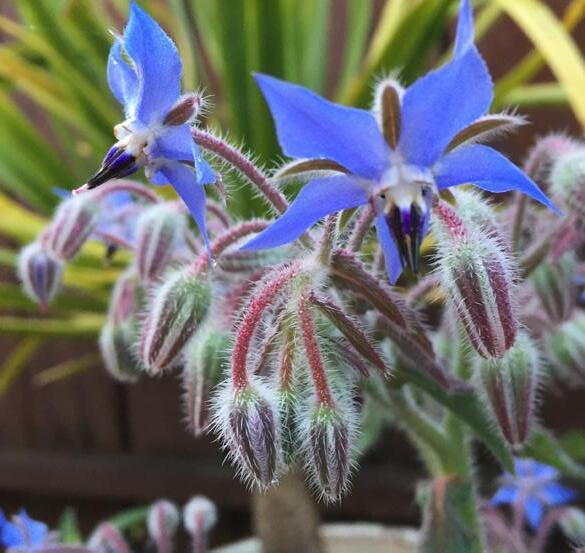
Borage is a fast-growing annual herb, with vivid blue flowers. Not only is borage a bee attractant but it is also believed to help many plants grow better –including strawberries, tomatoes and cucumbers. This herb is a favourite amongst pollinators, attracting both honey bees and bumble bees, as well as butterflies!
Manuka
Leptospermum, commonly known as Manuka, is popular for its vibrant blooms from winter through spring. This beautiful plant will attract bees to your garden and is the source of nectar for Manuka honey. Manuka loves the sun, so choose a sunny area in your garden for planting.

12
CELEBRATING THE BEAUTY OF Lavender
From its timeless appeal to its captivating aroma, it’s no surprise that lavender is a favourite among Auckland gardeners. This perennial effortlessly adds elegance to any garden, be it a classic cottage garden or a modern landscape.
With its hardy and droughttolerant nature, lavender is well-suited to Auckland’s traditionally dry summers. However, despite its preference for drier conditions – this versatile plant can handle wetter climates like we experienced last summer. While it usually blooms in spring and summer, certain varieties of English and French lavenders surprise us with yearround flowers, especially in the Auckland north region. Loved by both bees and gardeners for its fragrant blooms, lavender will make a brilliant addition to your backyard, attracting these buzzing pollinators.
Spanish lavender, with its adorable bunny ear flowers, follows the seasons more closely than its hardier cousins. A hard autumn prune after its final flowering keeps it looking neat and tidy. The French and English lavenders
require less care but appreciate a tidy in autumn, even when they're still blooming. English lavender is most commonly used for culinary purposes and is what the ‘true’ lavender fragrance and oil is derived from.
When it comes to growing lavender, it’s quite easy once established. As long as you avoid wet roots and provide some seasonal pruning, your lavender will reward you with beautiful blooms. They don’t like having wet feet, so be sure to plant them in well-draining soil and a sunny spot!
Make sure to include a little seasonal pruning in your routine. Remove fading flowers and trim back about a third in late summer, and they'll reward you with their blooming beauty.
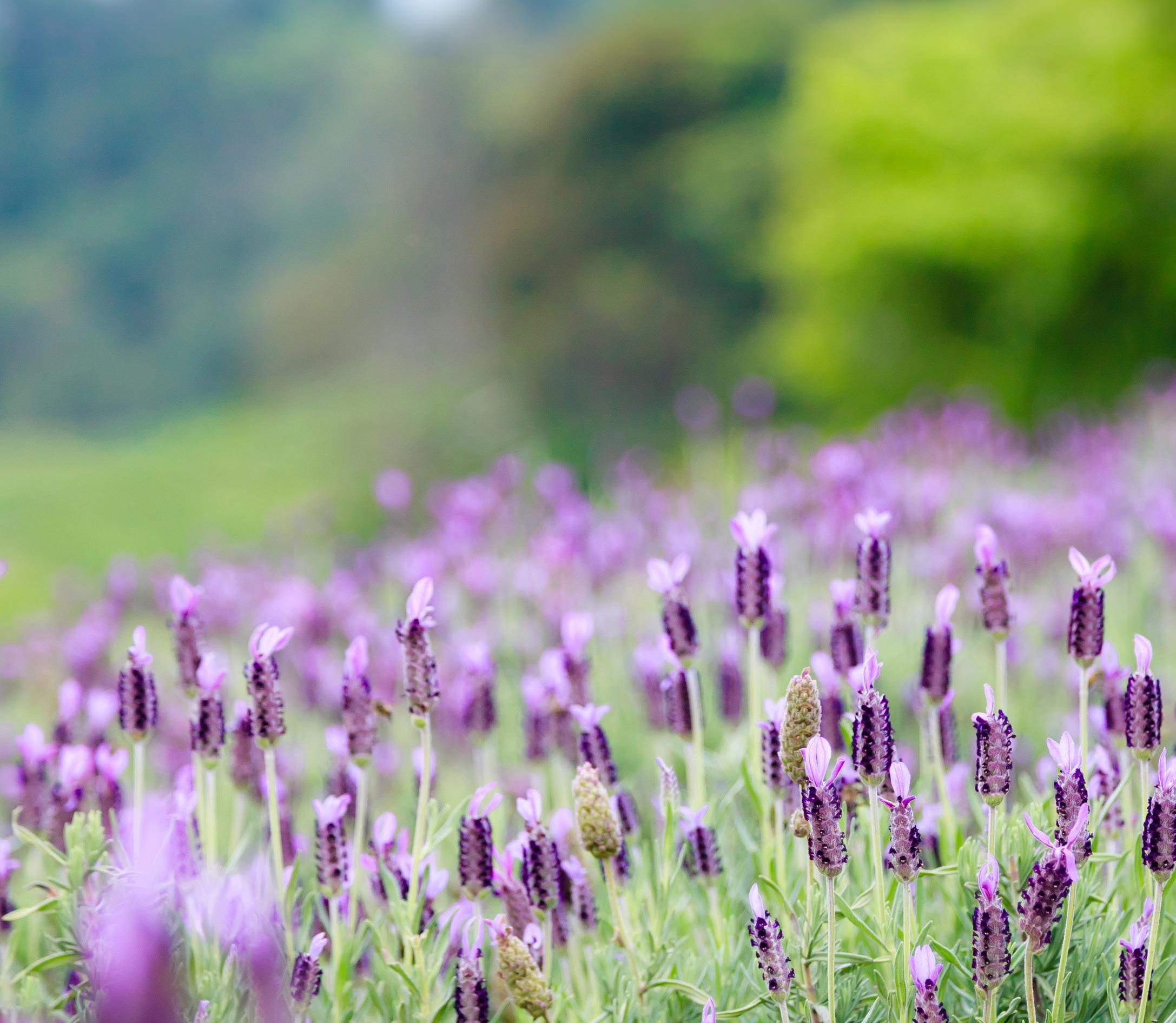
13
Our Top Varieties
Need help choosing the right lavender? Ask one of our expert team instore, or consider one of our favourites:


Major
Also known as ‘bunny ears’, Major is one of the most popular lavender varieties in New Zealand. This Spanish lavender’s flowers have distinctive bracts on the top of their fluffy buds, resembling bunny ears, hence the origin of its name.

Grows to 60cm x 60cm.
Dentata
Known as ‘French lavender’, Dentata has small ‘toothed’ leaves, ideal for a garden border or small hedge. Its upright flower spikes, crowned with tufts of white and pale purple petals, add a vertical element to its visual appeal.
Grows to 60cm x 60cm.
The Princess
This long-flowering lavender is popular for its vivid colour with deep pink ‘bunny ear’ flowers contrasting against its grey-green foliage. Flowering from mid-spring to mid-autumn, Lavender the Princess has a delightful aroma when cut.
Grows to 70cm x 70cm.
New Release!
Ghostly Princess
Ghostly Princess stands out with its captivating silvery foliage, contrasting with delicate dusty pink flowers. This lavender variety not only offers visual allure but also boasts an extended flowering period, from late winter through spring.

Grows to 70cm x 70cm.
The Queen
A showstopper in the garden, The Queen is known for its two-toned blooms, with deep burgundy heads topped with lilac bracts that transform to a deeper pink as they mature. This lavender variety offers a striking floral display and a soothing, fragrant aroma.
Grows to 60cm x 90cm.

14
Spring Clean with FlexiBin











Ideal for big or small garden and landscaping projects. FlexiBin has got your spring clean covered.


















Available in two convenient sizes, 1m3 & 2m3












Flexible. Practical. Convenient.

See flexibin.co.nz for terms and conditions and collection areas.
STARTING
YOUR FIRST
Veggie Garden
Ever thought about starting your own veggie garden? Spring is the perfect time to dive in and give it a go! Being out amongst the birds, bees and broccoli is a great way to get a dose of Vitamin D which helps with your mood, and your mind, as well as boosting your immune system. Let's explore the benefits, the basics, and some useful tips to get your green thumbs in action.


16
Growing From Seed
Growing from seed is the most cost-effective way of growing your own, although it does require a little more patience than starting with seedlings. Seeds can be sown directly into the ground, or started off in seed trays - but don’t forget to follow the specific planting instructions on the packet.
When sowing into seed trays, fill with seed-raising mix, plant seeds, and gently cover with soil, pressing down gently. Select a warm, well-lit indoor spot or a sheltered, sunny outdoor area to help your seeds grow well.
If you’re sowing your seeds directly into the ground, prepare your garden beds by mixing in Kings Garden Mix, and then raking to form a fine seedbed. Plant the seeds and then rake over them gently with the remaining soil, watering in lightly once planted.
Getting Started
Planet-Friendly And BudgetFriendly
Growing your own veggies is not only good for the planet, but it’s also good for your wallet! Your garden becomes a perpetual growing machine, providing an endless supply of fresh goodies right at your doorstep. The ease of harvesting veggies straight from your garden is unmatched, and will save you a supermarket trip (or two)! Plus, you'll reduce your carbon footprint by minimising packaging waste associated with store-bought produce.
Take Control
When you have your own veggie garden, you choose exactly what goes on and into your plant - so you can say goodbye to those harmful chemical sprays! Plant and harvest what you want, when you want. You can enjoy the peace of mind that comes from eating produce that's truly organic and free from chemicals, which benefits your well-being and the environment.
It’s Easy!
Even if you've never grown veggies before, there’s no need to worry! With a little care and curiosity, it’s really easy to get started. Growing your own veggies not only lets you reconnect with nature but also keeps you active. Spending time in the garden under the sun provides you with some much-needed Vitamin D, which can significantly improve your mental health - just remember to apply sunscreen. Whether you're teaching kids about nature, seeking fresher produce, or enjoying the therapeutic aspect of gardening, you'll be sure to find growing your own produce a rewarding experience.
Plant With The Seasons
As the days grow warmer, it's time to plan your veggie garden for the upcoming season, before you get planting. Some crops grow well outdoors from spring to autumn, like tomatoes, eggplants, capsicums, and more. On the other hand, cooler weather is ideal for members of the brassica family, such as cabbage, broccoli, and Brussels sprouts. When it comes to figuring out what to plant, seed packets have handy regional guides, which tell you what to grow, and when. And of course, the veggie seedlings available in our stores are always aligned with what will grow in the coming season.

17
Sun And Soil
Most vegetables need full sun to grow well. If they are grown in the shade, they may become spindly from reaching for the sun, and they may fail to find the energy required to grow large enough to be edible. Ensure there is ample room for the roots to spread and flourish, whether you have a designated veggie patch or are using pots or raised beds.
Soil is so important for ensuring your veggies grow well. Be sure to get rid of any weeds first, then build on your existing soil with a good blend of Living Earth Organic Veggie Mix and some Kings Compost. Mix in Kings Sheep Pellets or Kings Organic Vegetable Fertiliser for an additional organic boost.
If you're planting in a bigger pot or container, starting off with a bag of Living Earth Organic Veggie Mix will give your veggies the best start. This mix contains all the beneficial nutrients and fertiliser your veggies need to grow well.
For crops that tend to grow topheavy, like tomatoes, or climbing plants like beans, put in some stakes or supports at planting time. Doing this before the plants get established means that you can avoid any potential root damage.

Grow Well
Regular watering and choosing the right fertiliser are essential for healthy plant growth. In the mornings, water deeply at the base of the plants to avoid soggy leaves and potential diseases. Liquid fertiliser is absorbed more quickly by plants, though it does require more work to disperse than slow-release food. Each crop has its own fertilising needs, so make sure to research and cater to their nutritional preferences and you'll be rewarded with a bountiful harvest!
Learn From Nature
With failure comes experience, and although it may be disheartening when your plants don’t grow as they should, gardening is a continuous journey and you will make mistakes along the way. Learning from these setbacks, is where the true growth happens. Your local Kings team are always on hand for any advice and guidance you may need, so bring some pictures of your issues instore, or email our Plant Doctor at plant.doctor@kings.co.nz
Aquaticus Organic Garden Booster

Feed all your seedlings, shrubs, trees and flowers with this organic fertiliser which helps combat root rot and dieback.
Living Earth Veggie Mix
Living Earth Organic Veggie Mix is specially created for edibles and can be planted straight into.

Kings Sheep Pellets
A great organic fertiliser for all plants, trees and shrubs, helping to improve soil structure.

ENTERING THE WORLD OF Growing Organic
Growing your own produce is so rewarding, and going organic takes it to a whole new level of satisfaction! It is better for our bodies and for the environment, so let's roll up our sleeves and get started!
Kings Top Tip
Healthy Soil
The best place to start your organic journey is by nurturing your garden's vibrant ecosystem: the soil!
A teaspoon of healthy garden soil can be home to a billion beneficial bacteria, thousands of protozoa, and endless fungal strands. There are loads of benefits of having a dynamic ecosystem in your garden, from improved plant nutrition and increased moisture retention, to resilience against pests and diseases. Enrich your soil by adding organic matter such as Kings Compost and Sheep Pellets, which will provide more food for your plants and the beneficial microbes beneath.
Worm Farms
Worm farms work wonders, turning food scraps into vermicast - a highly nutritious treat for your soil and plants. Dilute vermicast liquid with water at a ratio of 1:10 and use it to feed your veggies and fruit trees. Lightly fork in the vermicast solids when preparing your garden beds for another nutrient-packed boost of goodness.
Trichoderma And Plantmate
Protect your plants from soilborne diseases with the help of beneficial Trichoderma, found in Aquaticus Organic Garden Booster and Plantmate. Trichoderma is a fungus that colonises around plant roots, stimulating growth and preventing root rot issues.
Organic fertilisers not only feed the plant but also build up the soil biota, which improves nutrient availability going forward and helps the plants become self-supporting over the long term.

Thirsty Plants And Mulch
Nourish your garden beds with regular watering and mulching through the warmer months to ensure your plants and the beneficial microbes in your soil thrive. When mulching, make sure to leave a ‘crater’ around the tree so the mulch is not touching the stem. If there are water restrictions in place, reuse water mindfully from the kitchen and bathroom, if using eco-friendly soap.
19
Pest Control
Prevention is the key to warding off pests and maintaining a healthy organic garden. Protect veggies from birds and insects with bug netting. Try planting sacrificial crops and beneficial insect plants such as hyssop, borage and echinacea which will encourage pests to eat them, instead of your desired plants.
Combat pests safely with organic sprays like Aquaticus Bugtrol and Grosafe Bioneem. Always spray in the evening, and never spray on bee-friendly plants when they are in flower.
Compost
Fresh compost filled with beneficial microbes is another way to give your garden a boost. If space allows, place your compost bin on the garden beds to let nutrients seep into the soil naturally.

Short on space? Opt for a bokashi bin under your sink. This mini compost bin doesn’t smell, and when using 'Bokashi Zing Compost’ leftovers will decompose four times faster, plus, the liquid can be used to feed your plants!
Weeding
Weeds can be managed by prevention, organic spray methods, or physical efforts. Regular weeding in the veggie patch is essential to stay ahead. Use Japanese Niwashi tools or a grubber to make removing weeds easier, and don’t forget to pull out the roots as well as the leaves!
Some weeds can be removed with organic weed killers. Try Nature’s Way Weedkiller, an organic herbicide that uses fatty acids to kill the tops of weeds and weaken the root system underneath.
Kings Top Tip
Weeds in your garden can house pests, including slugs and snails. Keep on top of your weeding to naturally reduce pest infestation.
20
A BEGINNER'S GUIDE TO Tomatoes
Get ready to embark on a veggie-growing adventure! Whether you're a beginner or a seasoned gardener, tomatoes are the perfect veggie plant. Once you experience the satisfaction of growing your own, you'll be eager to expand your vegetable patch.


Sowing Seeds
If you want to explore unique varieties of tomatoes, growing from seed is a great option. Auckland's warm climate allows seed sowing from mid August. Plant seeds in Yates Organic Seed Raising Mix. Once they sprout, put them in the sun, keeping the soil moist. When they've developed two to three pairs of larger leaves, transplant them into the garden.
Growing From Seedlings
For a quicker start, try tomato seedlings. Super punnets have individual pockets which ensure their roots won’t get tangled, setting your tomatoes up for fast growth. Pop them out of the punnet and into your soil, and they'll quickly take off! You can reuse the punnets for seed sowing or recycle at your local Kings

Buying Established Plants
Need a headstart, or a catch up? Available from mid-September, mature plants establish quickly, producing a bountiful harvest. Grafted tomatoes will grow larger than a standard tomato, and have the capacity to hold much more fruit. Tumbling tomatoes are smaller plants, ideal for pots or hanging baskets.
Planting
Tomatoes grow well with at least six hours of full sun daily. Make sure your tomato plants have good airflow without harsh winds. Rotate your crops yearly, avoiding areas where tomatoes, potatoes, or eggplants grew the previous year to prevent soilborne diseases. Tomato vines can get top-heavy, so they should be staked, held up by string, or tied to a trellis.
When growing in pots, use Kings Container Mix or Tui Tomato Mix as these mixes have water crystals for improved moisture retention, as well as slow-release fertiliser to help feed your plants. Choose a pot with plenty of space (at least 40L for a mature plant) to ensure healthy root development.
When planting directly into the garden, make sure your soil is full of nutrients. If you didn’t use
green crops over the winter, dig in some Kings Compost. Dig a hole twice as deep and wide as the pot your plant came in, adding Kings Organic Vegetable Fertiliser or Kings Sheep Pellets and a blend of Kings Compost and topsoil. Firm the soil, water deeply, and leave at least a metre in between plants.

21
Greenhouses
The advantage of planting in a greenhouse is that it offers protection from insects, birds, and frost. Ensure proper ventilation to prevent fungal diseases, and rotate crops annually, or replace the top 50cm of soil with Tui Vegetable Mix.
Feeding And Watering
Tomatoes are heavy feeders; start feeding them with Kings Liquid Tomato Food every two weeks
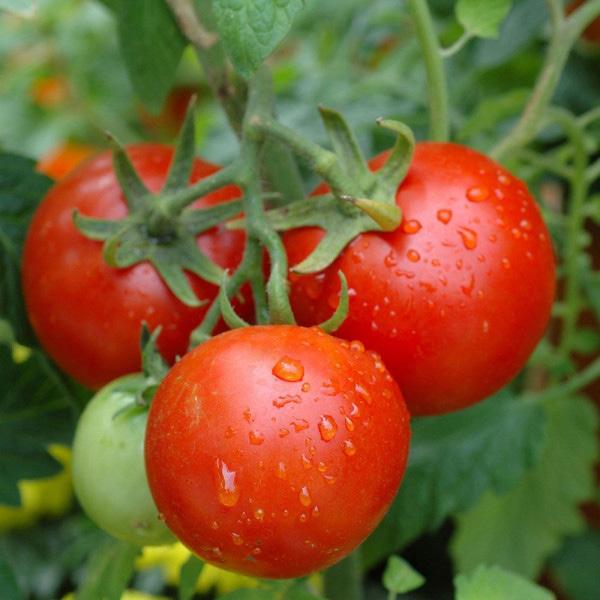

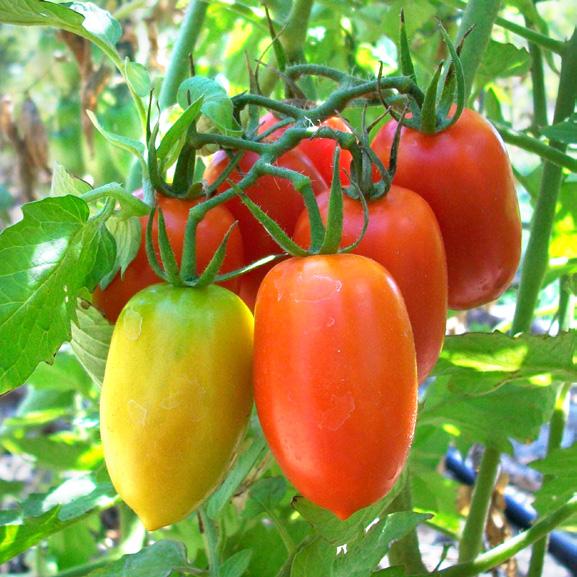
Our Top Varieties
once established. Water deeply around the roots, avoiding the foliage to prevent leaf burning and fungal diseases.
Pruning
To channel energy into fruit and flower production, remove side shoots or ‘lateral’ branches. These are found sprouting at any angle between the main stem and an already-formed branch.
Pick tomatoes once they have fully ripened on the vine and
turned red, or orange, or yellow (depending on the variety!).
Harvest green tomatoes slightly earlier, when the tomato is showing a hint of colour at the base of the fruit. Leave a small stalk on the fruit and let them ripen in a sunny spot.
Tomatoes come in a range of colours and sizes, with different tastes and culinary uses. Here are our top picks for this spring:


Beefsteak
Named for its large, fleshy fruit, the beefsteak tomato is ideal for slicing and using in sandwiches and burgers.
Sweet 100
These small, sweet cherry tomatoes produce an abundance of fruit (this is where the ‘100’ comes from) from late spring through to late autumn.
Money Maker
Your classic medium-sized tomato with juicy fruit. This is a prolific cropper and great for using in salads and in fresh dishes. The plant has good resistance to disease.
Roma
Delicious in soups and pastes, Roma tomatoes are acid-free and oblong-shaped. The fruit ripens all at once, rather than throughout the season.
Black Krim
A striking tomato in a deep reddish-purple colour, Black Krim is popular for its sweet and juicy flesh.
Tomatoes grow better with a friend! Companion plant them with basil, which helps keep some pests away and is said to improve flavour. Plus, they also taste great together when you harvest!
22
Kings Top Tip
GROWING YOUR BEST GARDEN WITH LIVING EARTH

Everyday multi-buy
If you want a natural superfood that gives your plants a turbo boost and helps build a healthier soil long term, try out the Organic Living Earth range for your spring planting. Guaranteed weed free.

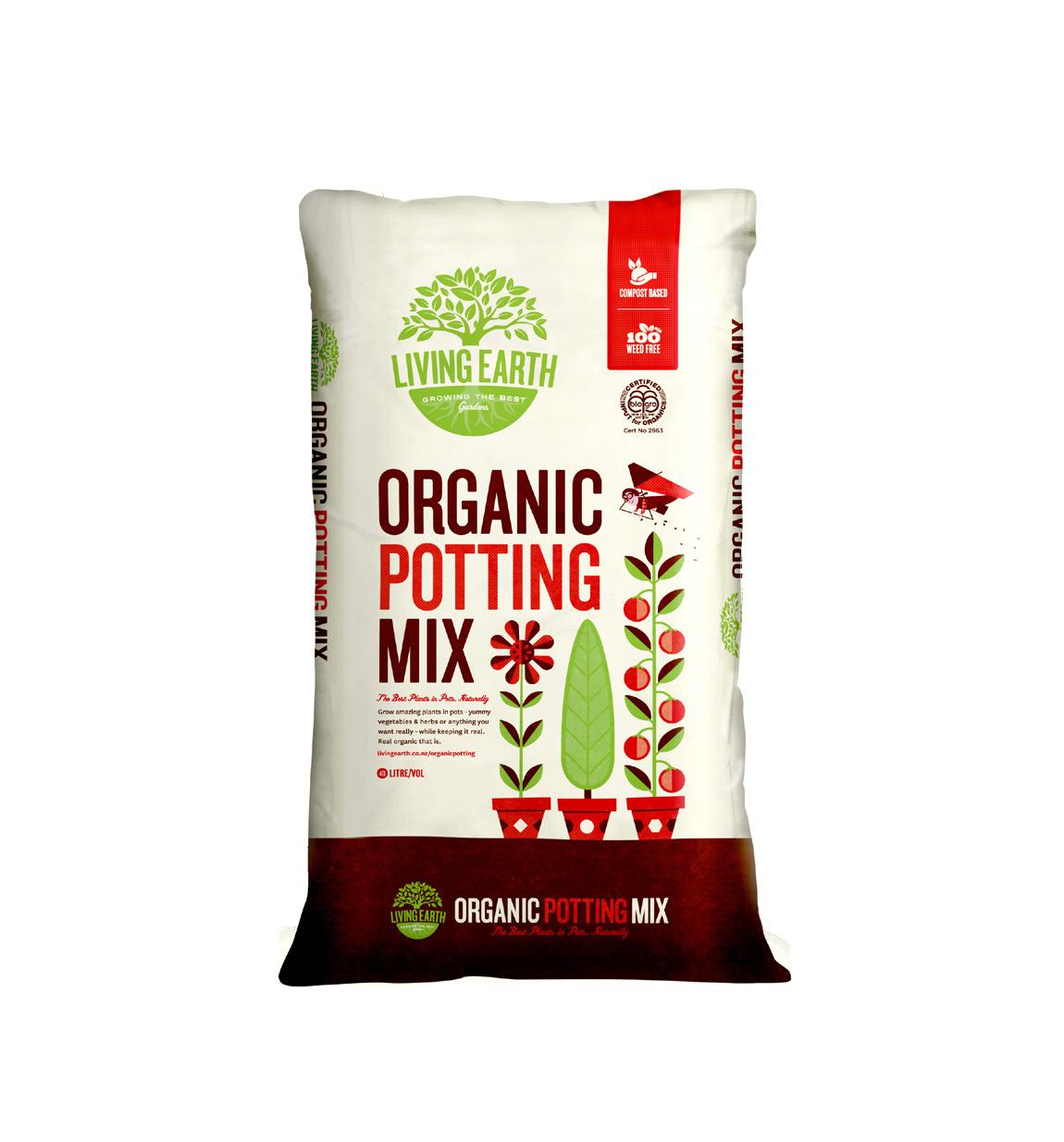

100% Organic Compost
organic matter.
brewed from recycled
PASSIONATE PLANT PEOPLE Meet Our Team
Boston Garden Centre Assistant

My earliest memory of gardening was digging up potatoes with my dad when I was about 8 years old.
Kings featured early on in my life, as my Mum would take me to the old Remuera Store where I’d spend the whole time playing in the small dingy boat that was at the cafe. I never would have thought this would become my place of employment.
This is my first full-time role since leaving school. And I love that every day is so different, especially with the changing seasons bringing their own unique qualities. Some days I’ll be driving to our nurseries to pick up plants for customers or other stores. Other days I’m planting trees at local schools within the community.
It’s amazing how much knowledge is acquired every day working in a garden centre. The best part is getting new plants delivered and learning as much as I can about them so that I can share my knowledge with our customers. And the large number of dogs I meet each day is an added bonus.
Debs Garden Centre Assistant
I’ve been surrounded by gardens most of my life. From growing up in the garden city, Christchurch, to developing my first home garden in Wellington many years ago, to enjoying the fruits of a subtropical Auckland garden.

While raising my family I was looking for a flexible part-time role, which led me to join a small garden maintenance crew. It was a great way to sharpen my knowledge of plants and to experience all sorts of different garden forms –especially for the Auckland region. When it was time to rejoin the workforce full-time, it felt like a perfect fit when I applied for the role at Kings. It’s been my go-to place for plants and garden supplies for a long time.
My current garden is a real labour of love. From a blank slate 12 years ago, it has developed into a treasure trove of maturing citrus, exquisite orchids, pops of colour in pots and a few rare plants hidden among the hedges.
I love the idea that every day in the garden can be so rewarding - a special bloom, a new shoot, a new season. And I love sharing this with the customers I meet each day.
24
The team at Kings are plant people – passionate and enthusiastic about caring for plants. Get to know a few of our team, and the story of how their love for plants came about. With their expertise and love for plants, they’re here to help you grow well.
Corey Nursery Manager
I began growing using garden boxes for vegetables and flowers from the age of 5.
During high school, I started collecting native seeds and germinating them. It’s satisfying to take a seed and see it grow into something that will be around for years. This passion grew into a hand-built greenhouse and eventually led to selling the seeds and seedlings to Kerikeri locals.
I joined Kericell Nursery in Kerikeri after high school, working in the yard, then as a seeding operator for veggies and flowers, and by 2021 was their Production Manager. I spent a season in Nelson in 2021 with Waimea, one of the largest fruit tree growers in NZ.

And then in 2022 Kings offered me a new role managing one of their nurseries. It’s been a great opportunity to apply everything I already knew alongside learning more about new types of products, and some of the different challenges growing trees and shrubs.
It’s very rewarding helping customers with products they need for their home garden and also being able to introduce some newer options. Especially as the variety of what’s grown in our nurseries is huge.
My move to Auckland has meant a lifestyle adapted for smaller properties. I found a passion for using old pallets to make garden boxes for my little rental. I’m a big believer you can grow so much in a small space if you use the right fertilisers and pest control.
From
Sucheta Plant Doctor
My journey with plants began with sowing a pomegranate seed in Ahmednagar, India, at 7 years old. Seeing it grow into a small tree was truly amazing for me and my classmates.
Growing up I was surrounded by vegetation and enjoyed learning about plants and identifying local flora. It’s a passion which led to me studying Plant Sciences and eventually a PhD in Plant Pathology.
After 30 years as a Research Scientist in India and NZ I’ve turned my focus onto gardening where my learning with plants continued since joining Kings 7 years ago.

For garden enthusiasts especially in metropolitan cities like Auckland, finding ample space to grow a variety of plants can be quite an exercise. I especially enjoy talking to customers about container gardening and building resilient gardens. Planting in containers is an easy and versatile way to fulfil our gardening desires. And as a plant pathologist, I also like helping customers solve any pest and disease-related problems in their gardens.
My favourite plants are the Jasminum varieties: arabicum, azoricum, officinale…their fragrant flowers take me back to my childhood.
My home garden is a clean slate at the moment - washed away by the floods and cyclone. It will soon be filled with plants…no doubt about it!
today and meet our team of expert staff and knowledgeable Plant Doctors. Whether you’re a beginner or a gardening pro, our team are here to help you grow well.
our nurseries to our stores, at Kings we love helping our plants and our customers grow. Head instore
25
WITH A Resilient Garden
With extreme weather becoming a regular occurrence, Auckland gardeners are channelling their energy into creating gardens that shine even through the less favourable conditions. Crafting a garden that’s both resilient and beautiful is easier than you think, and we’re here to help.


The key to planning and improving resilience lies in taking a closer look at the specific challenges your own garden is facing.
Here are some key things to consider that will help strengthen your garden and its durability:
• Excess Water: Is your garden turning into a mini pond after those heavy downpours, causing potential waterlogging issues?
• Water Run-off: Does water quickly run off your garden, stripping the soil of nutrients and eroding the valuable topsoil?
• Drought Conditions: After a dry spell, does your soil, grass, or garden beds transform into rock-hard surfaces?
• Garden Structures: Are there any simple changes you can make to your garden or its structures to improve resilience?
Whether you're ready for a full transformation or prefer gradual change, here are some practical solutions to enhance your garden’s resilience, and keep it looking beautiful:
Raise Your Garden
Elevate your gardening game with raised beds and bordered edges. A barrier as little as 100-150mm high can prevent water from running off your garden and helps keep soil and nutrients in place.
Making The Right Plant Choices
Consider water-absorbing plants such as oi oi, banana, tree ferns, and certain flaxes. For droughtresistant options, go for olive and bay trees or grevillea, as well as various grasses.
Well-Draining Soil
The key to resilience lies in welldraining soil. Strike the perfect balance of organic material and soil to keep your garden growing well, rain or shine!
Invest In Spongy Surfaces
Reduce hard-scaped areas in your garden and incorporate loose materials like river stones and pebbles to help with drainage. Plant water-absorbing plants in areas prone to pooling water.
Soil Conditioning
Whether your soil is sandy or clay-like, soil conditioning can work wonders! For sandy soil, add organic material and a quality garden mix to improve drainage and nutrient retention. For heavy clay-like soil, work it to become more pliable and well-draining.
Plan For Canopy And Shade
Veggies and summer flowers love 6 hours of sunlight, while other plants enjoy dappled light or a gentle tree canopy. Planting a tree canopy serves a dual purposeestablished roots hold the ground steady, handling water run-off, while taller plants absorb excess water, offering cool shade on hot days.
WEATHER AUCKLAND'S
CLIMATE
26








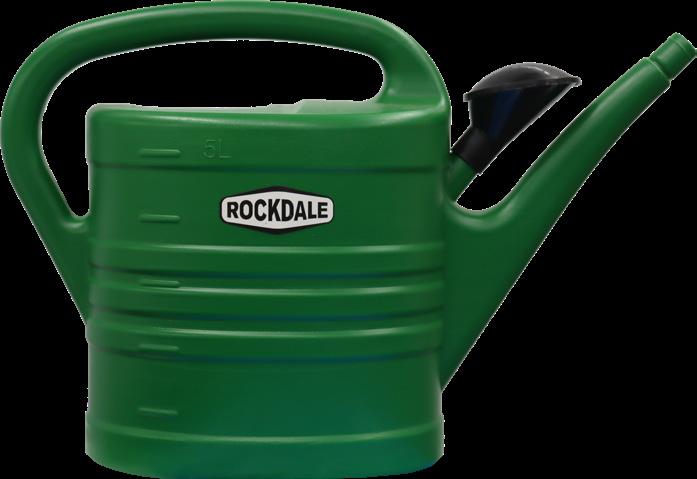


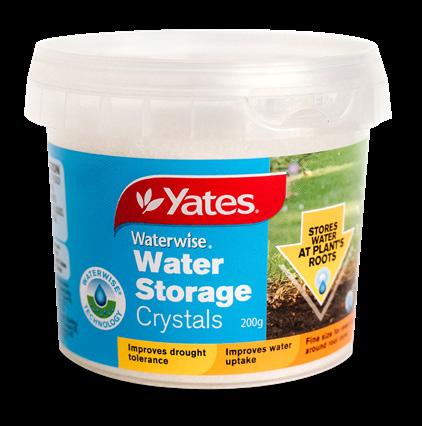 Gardena Flex Timer
Egmont Magic Mulch With Seaweed
Gypsum ClayBreaker Kings Sheep Pellets
Aquaticus Organic Garden Booster
Aquaticus Soil & Plant Soil Conditioner
Tui Mulch & Feed
SaturAid Plastic Watering Can
The Gardener Soaker Hose
Living Earth More than Mulch
Gardena Flex Timer
Egmont Magic Mulch With Seaweed
Gypsum ClayBreaker Kings Sheep Pellets
Aquaticus Organic Garden Booster
Aquaticus Soil & Plant Soil Conditioner
Tui Mulch & Feed
SaturAid Plastic Watering Can
The Gardener Soaker Hose
Living Earth More than Mulch
27
Yates Waterwise Water Storage Crystals
FROM BUD TO BLOOM: Loving Roses
With their prickly stems and delicate blooms, roses are known to be a bit challenging for beginners. However, despite this reputation, roses are surprisingly resilient and can make a stunning addition to any garden, regardless of your experience. The choices are endless with so many gorgeous cultivars available, from the old-fashioned David Austins to the familiar favourites from our local breeders. No matter which one (or two, or twenty) you decide on, taking care of roses is easier than you think, and with a little know-how, you’ll find yourself enjoying your own beautiful blooms year after year.

28
Positioning
Just like humans, roses thrive with a good dose of sunlight - they need at least 6 hours of full sun daily during the summer. Opt for a location with welldraining loamy soil rich with organic matter, to give your roses the ideal foundation to flourish. An airy position with good air circulation will help prevent common fungal issues, particularly in humid months. Remember, the right spot can make all the difference, and while a struggling rose might just need a new location, avoid relocating them during spring and summer.
Planting
Now that you've found the perfect spot, it's time to plant your roses. Planting in the ground is better than planting in pots, as it will give your roses plenty of space to spread their roots. Dig a hole that's twice the size of the pot your rose came in. Enrich your soil by mixing in Kings Compost and Sheep Pellets. Backfill the hole with your original soil, and for heavy clay soils, consider adding a handful of Claybreaker Gypsum to improve drainage.
After planting, give your rose a deep watering and use Kings Slow-Release Rose Food to give them the best start. Mulch will help retain moisture, so add a layer for that final touch.

Care
Deeply water your roses once or twice a week in the summer. Allow the hose to run for about five minutes each time, or if you're conscious about water usage, reuse water from the sink or bath. Deep watering is important as it ensures the water soaks the roots, but be careful not to wet the leaves to avoid fungal problems.
Pruning might sound intimidating, but it's not as complicated as it seems. Prune your roses when they are dormant (often in June or July), and give them a good trim to encourage healthy growth.
Throughout the year, keep an eye on the mulch to ensure effective moisture retention around the roots. When deadheading, be sure to cut back to a major leaf instead of just removing spent flowers. This practice will keep your roses looking neat and ensure abundant flowering in the future.
Beautiful, classic and timeless, roses are the life of any garden party. With countless varieties to choose from, you'll find your perfect match in no time.
29
KINGS IN THE Community
Oke Charity
Oke is a homegrown charity, dedicated to teaching kids the joys of gardening by constructing productive gardens in Auckland schools. They work hand in hand with the local community to bring these gardens to life. The veggies and fruit grown in these gardens stay within the school community, allowing the kids to learn the lifelong skill of gardening. This September, Oke is building their 35th garden at Orini school, which is also their first build in the Waikato region, and their 8th garden for the year.
Tread Lightly
The Tread Lightly Caravan travels around Auckland schools teaching tamariki aged 5-13 years about the environmental impacts of their everyday choices. The Tread Lightly team teaches the children about how small changes can add up to make a big difference.

As part of our partnership, we support Tread Lightly’s little growers programme by supplying soil, seeds and incentives to encourage the children to continue to care for their plants.


Trees For Survival
Trees for Survival work with schools to grow, nurture and plant native plants, with over 140,000 native plants being planted in 2023. This environmental education programme provides an opportunity for children to make a practical difference to the environment while learning about conservation, wetland restoration and protecting streams. Trees for Survival planting days are a great opportunity for students to be outdoors planting trees they've grown and making a positive addition to their environment.
30
At Kings, we’re proud to support community groups who are on a mission to make their neighbourhoods greener.
WELCOMING THE SUNSHINE WITH Summer Bulbs
In the world of gardening, few things rival the captivating beauty of bulbs. They lie dormant under the soil for months before erupting into a spectacular display of blooms. And the best part? They're a breeze to grow and require minimal maintenance. From dahlias to gladioli, they come in various types and shades, making them a must-have for any Auckland garden.
Planting
For the best results, plant summer flowering bulbs in spring or autumn, depending on the variety. Keep an eye on when they're available in stores, as that's your cue to get planting! Summer flowering bulbs grow well in full sun, whether they are planted in the ground or in pots.

When planting in the garden, improve drainage by planting into raised beds, forking the soil and adding Gypsum ClayBreaker and Kings Potting Mix if needed. If the area tends to get wet, plant the bulbs in a slight mound to keep them growing well. When planting
in pots or containers, make sure there is enough space for the bulbs to grow. Opt for a bulb mix, or a well-draining mix without water storage crystals to prevent rotting. We recommend Tui Bulb Mix or Kings Potting Mix.
Watering
Water your bulbs deeply after planting and until they start sprouting. Bulbs in shadier spots will have longer stems, making them ideal for cut flowers. During dry summer months, regular watering is essential. Just be careful not to let the pots sit in water, as this could cause the bulbs to rot.
Feeding
Every three months, give your bulbs a side-dressing of Kings Bulb Food to boost flower bud development, but be sure to avoid direct contact between the food and the bulbs. Monthly applications of Aquaticus Organic Garden Booster will promote a strong and healthy root system.
Protecting
Keep an eye out for sap-sucking insects like thrips and aphids, especially during dry weather. Use Aquaticus Bugtrol to keep them under control.
31
Our Top Summer Bulbs
Summer bulbs are available in a range of beautiful colours and sizes. Amongst the corms, bulbs and tubers, there are so many varieties to choose from. Here’s everything you need to know about the types of summer bulbs we’re getting in.
Begonias
Bursting with vibrantly coloured single, double or frilly blooms, begonias add a pop of colour to hanging baskets, containers, or garden beds.

Also known as zantedeschia, calla lilies bring elegance and beauty to your garden or pots. Characterised by their distinctive trumpet-shaped blooms in warm tones of oranges, yellows and reds, they're easy to grow and make stunning cut flowers.
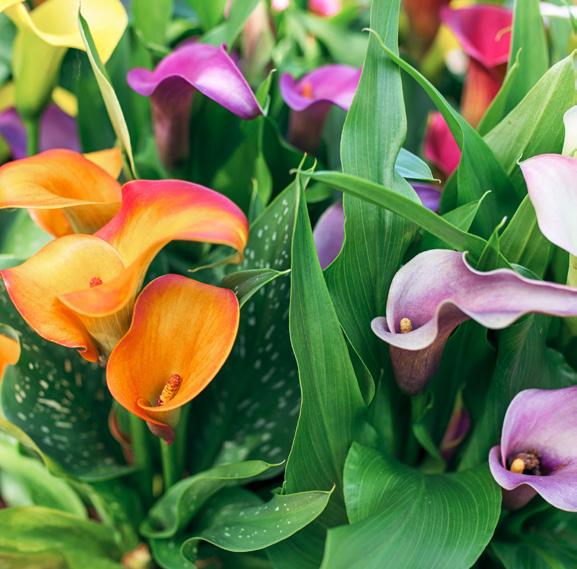
Gladioli
Loved for generations, gladioli produce striking flower spikes up to 1m tall. Available in a huge range of colours and patterns, they're ideal for flower gardens, containers, or anywhere you want a burst of colour.

Dahlias
With an array of colours and flower shapes, dahlias are true showstoppers. From soft pastels to fiery reds and vivid yellows, they'll make a stunning addition to your garden beds or pots. There’s such a diverse range of dahlias available for all gardens, so discover your dahlia today.
 Calla Lilies
Calla Lilies
Discover Your
32
Dahlia Quiz
In your garden, do you... welcome all visitors value your privacy
Is your dream garden...
or
Does your garden have... a curated selection an eclectic mix of plants or
As a gardener, do you... plant and forget manicure to perfection or
If you had to choose one... classic rose garden tropical paradise or
muted colours a rainbow of colours or
or
As a gardener, do you... stick with what works try new things or
Would you rather host a... backyard BBQ boujee high-tea
Decorative Dahlia
A classic beauty, bringing vibrant elegance to the garden
Would you rather have... same thing all year new every season
or
As a party-goer, do you... host events travel to others or
Do you consider your garden... high maintenance low maintenance
or
Would you rather a... extravagant garden subtle garden or
Dinner Plate Dahlia
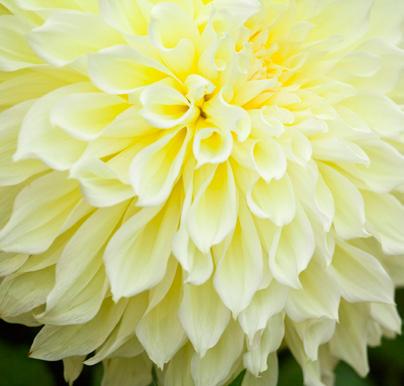

Loud and bold, creating a captivating spectacle
Would you rather have... lots of small flowers fewer, larger flowers or
Pom Pom Dahlia
Enchanting and beguiling, with small bursts of floral delight
Anemone Dahlia
Quirky and fun, adding something extra special to your life
Cactus Dahlia
Striking with spiky accents, adding a unique flair to your space
Not right for you? We have our largest ever range of dahlia tubers instore now. Shop online or visit your local store to Discover Your Dahlia.

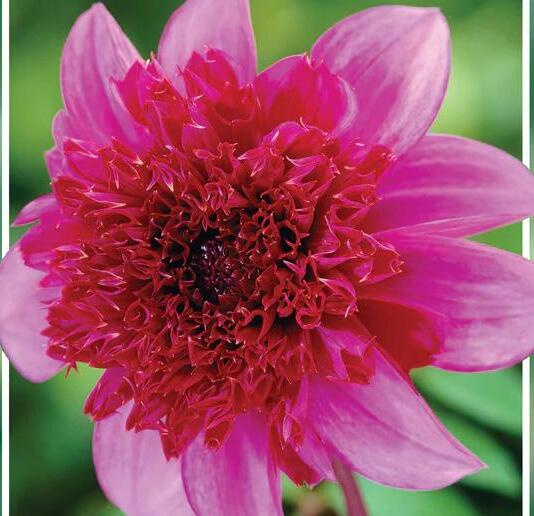
 Caribbean Fantasy
Blue Bayou Red Pygmy
Franz Kafka Kelvin Floodlight
Caribbean Fantasy
Blue Bayou Red Pygmy
Franz Kafka Kelvin Floodlight
SPRING INTO ACTION WITH OUR Houseplant Tips

Spring brings a time of new growth and energy for our indoor plants, making it the perfect season for some extra love! Just like the rest of nature, our houseplants come alive during this period, and repotting becomes essential every few years.

34
Does My Houseplant Need Repotting?
Check for roots peeking through the drainage holes, slow growth, or quicker drying after watering – these are signs that your houseplant may need a new home.

Newly bought plants usually don't need repotting right away, especially if they come with tags that recommend waiting. Some indoor plants such as moth orchids, anthuriums and peace liliies love being cozy in their pots, so don't rush into upsizing, as they might struggle to bloom until they grow bigger.
Repotting 101
1. Prepare Your New Pot
Choose a new pot that's up to 5cm larger or the same size as the current one, but avoid going too big to prevent there being too much wet soil that your plant cannot absorb. Add a layer of new potting mix, such as Kings House Plant Mix, at the bottom for your plant's roots to grow into.
2. Remove Plant From Pot
For rootbound plants, a quick flush of water can help loosen the roots. Trim any overly long roots if needed. For new plants, gently squeeze the plastic pot to loosen the soil, turn it upside down with one hand secured around the top of the soil, and gently pull the pot away from the soil and plant.
3. Add Your Plant And Soil
Place your plant in the new pot at the appropriate depth, ensuring there is about 3-4cm of space between the top lip of the pot and the soil level. Gently fill in the new mix around your plant, but only up to where it was sitting before –above the roots but below where leaves are growing out of stems.
Kings Top Tip
Adding a slow-release fertiliser, such as Kings Slow Release House Plant Food, when repotting, will ensure your plants get the nutrients they need to grow well.
35
Care Tips
Spring has arrived, and it's the perfect time to show your indoor plants some extra love! With longer days and warmer weather, their growing season is in full swing, and you'll notice new growth all around.
Here are some spring care tips to keep your indoor plant babies growing well:

Watering
As the weather starts warming up again, your plants will need a little more hydration. Check the soil's moisture level with a moisture meter or by sticking your finger into the soil to see if it’s damp. If the soil feels dry, give your indoor plants a good drink, but remember not to overwater as they don’t like soggy roots!
Position
Find a spot with bright, indirect sunlight so your plants can enjoy the sunshine without getting burnt. Some plants, like cacti, enjoy some direct morning sun, while others, such as string of pearls, prefer a more shaded corner. If you have a vining plant, place it on top of a bookshelf, fridge or a tall cabinet and let its lush foliage cascade down.
Fertilising
Spring is here which means regular fertilising can resume. Use a liquid fertiliser, such as Kings House Plant Liquid Food, every four to six weeks for a quick nutrient boost. If you want a slow-release option, try Kings Slow-Release House Plant Food, applying it once in spring and again during summer.
INDOOR ESSENTIALS
Kings House Plant Mix
Kings House Plant Mix has been specially formulated for indoor plants. It also contains slow-release fertiliser that will last up to six months.


Kiwicare Gro-Sure Watering Indicator
No need to guess, this watering indicator makes it easy to tell whether your plant needs watering.

Kings House Plant Liquid Food
Kings House Plant Liquid Food is a complete feed which provides the nutrients your plants need to produce healthy foliage, and vibrant flowers.
36
Grow well with
XPERT ADVICE
Whether you’re a beginner or a pro, our team of plant specialists help you choose the right plants and offer expert gardening advice so you can grow well.
We

transform gardens, and gardeners.
E

38
Little Growers Corner
1
BUILD YOUR OWN Bean Castle
Win!
Email
2
Cut out our castle template on the previous page. Colour it in using your favourite colours, and add decorations such as leaves from your garden to make a magical castle for your beanstalk to grow to.
3
Fill a pot or container with potting soil, leaving about 5cm from the top. Plant your bean seed about 5cm deep into the soil, pointing the tip of the seed downward.
Bean Tip


While most beans will work, we suggest a Scarlet Runner or Snake Bean!
4
Gently water the soil around the seed until it's moist, but not soaking wet. Place your pot where it can get plenty of sunlight. Make sure to water the soil whenever it starts to feel dry.
Take two sturdy sticks and place them on either side of the pot, pushing them gently into the soil. Tape your castle to the top of the sticks, for your beanstalk to grow to.
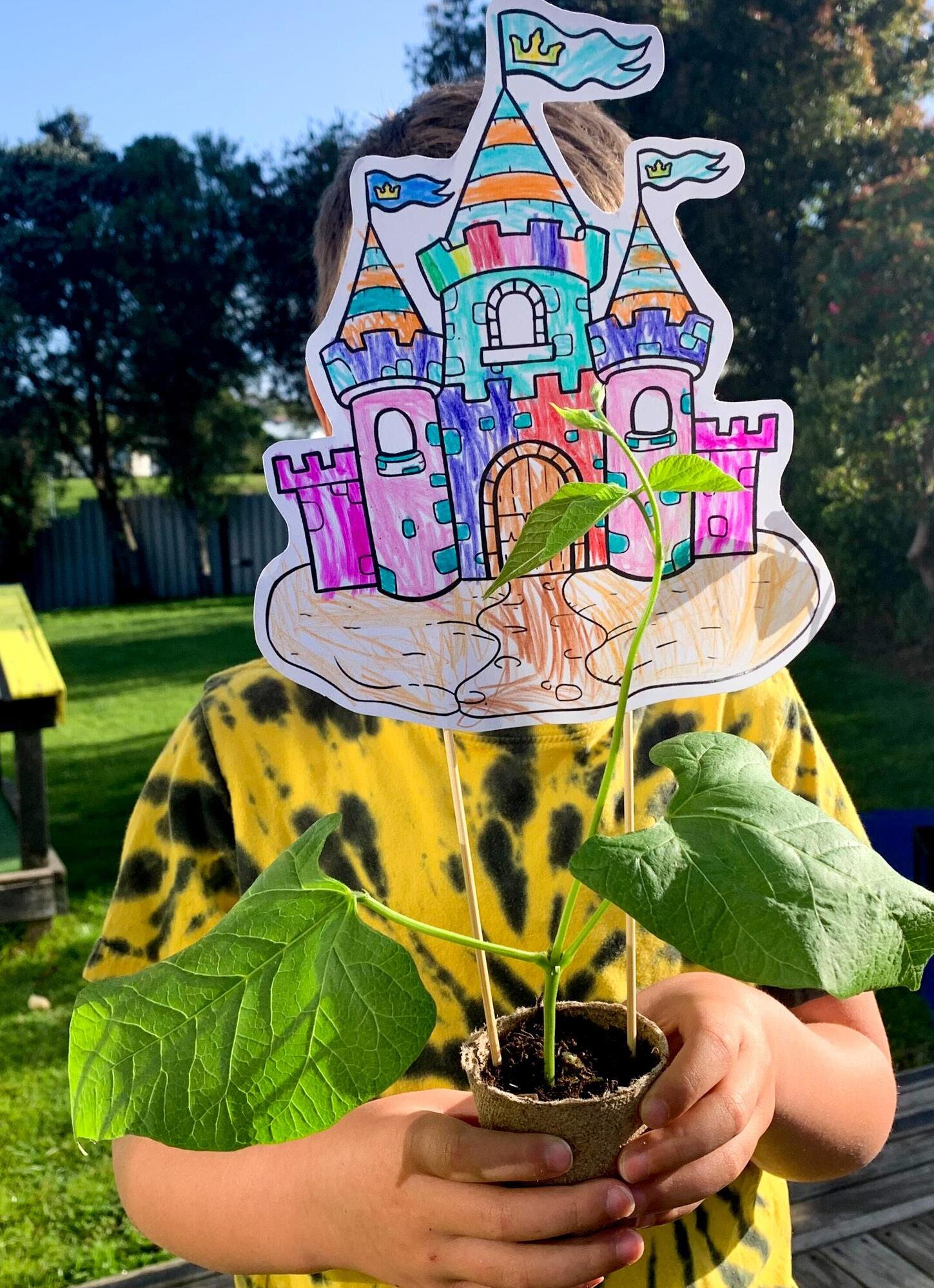
5 Keep watering your beanstalk regularly and watch as it reaches for the sky!

IL T T LE GRO WERS C L U B
a photo of your growing beanstalk to scoop@kings.co.nz before 1st December 2023 and go in the draw to win a $50 Little Growers prize pack!*
*One winner will be randomly selected and notified by email by 9th December 2023. One entry per person.
39
GARDEN TO PLATE Recipes
Rather than cutting, harvest rhubarb by firmly grasping the stalk close to the base, and give it a firm twist and pull which should break it clean off the plant.
Kings Top Tip
Rhubarb Cake
Indulge in our delicious rhubarb cake, a simple yet satisfying dessert. Made with freshly harvested rhubarb and zingy lemon zest, each slice will undoubtedly have you wanting more.
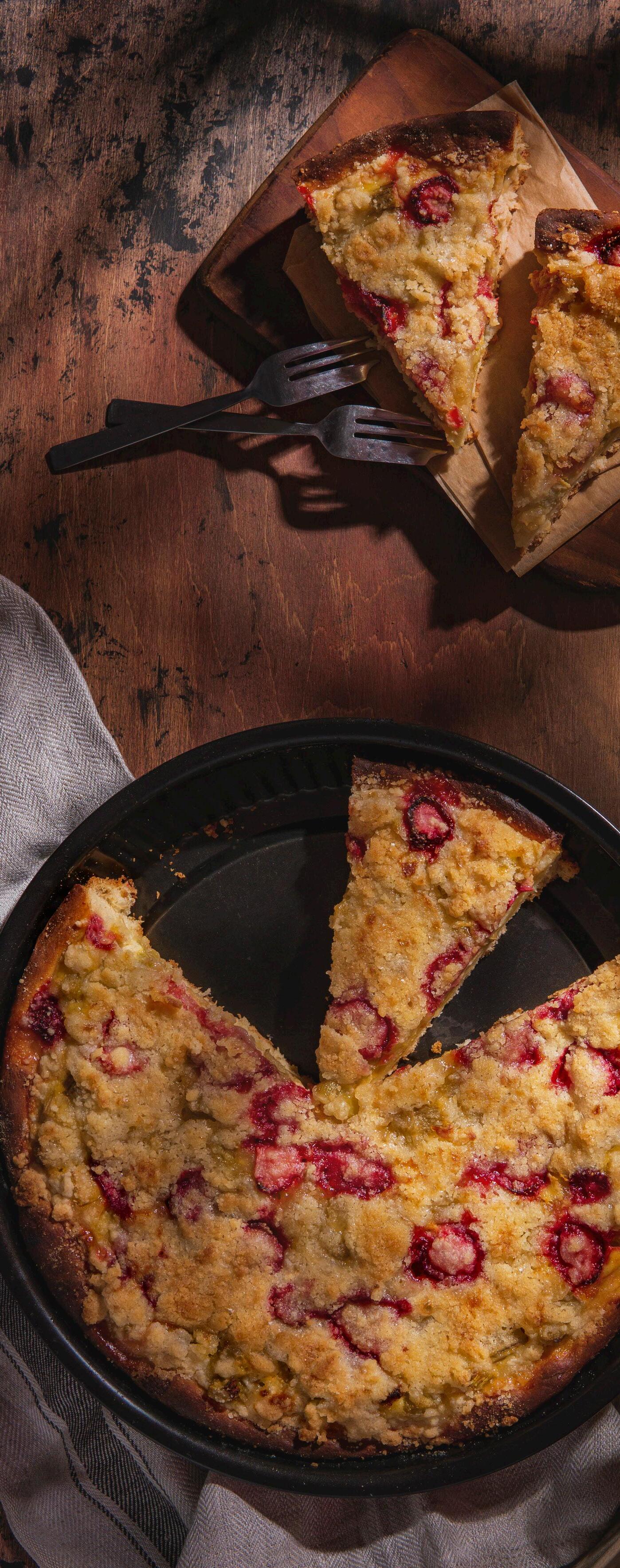
What You’ll Need
∙ 60g softened butter
∙ 1 1/2 cups (300g) brown sugar
∙ 1 tsp vanilla extract
∙ 1 tsp finely grated lemon zest
∙ 2 eggs
∙ 1 cup (150g) plain flour
∙ 1 cup (150g) self-raising flour
∙ 1 tsp ground cinnamon
∙ 300g Light Sour Cream
∙ 350g trimmed rhubarb, cut into 2cm lengths
∙ 1/4 cup (55g) brown sugar
∙ 1 tsp cinnamon
∙ Custard or cream, for serving
Method
Preheat your oven to 160°C. Grease a 24cm springform pan and line the base and sides with parchment paper, letting it extend by about 3cm above the rim of the pan.
Using an electric mixer, combine the softened butter, brown sugar, vanilla extract, and grated lemon zest until the mixture is well blended. Add the eggs one at a time, beating well after each addition. Gradually fold in the plain flour, self-raising flour, and ground cinnamon, alternating with light sour cream in two batches. Gently fold in the rhubarb pieces.
Spread the cake mixture evenly into the prepared pan. In a separate small bowl, mix the extra brown sugar and extra cinnamon, and then sprinkle this mixture evenly over the cake batter.
Place the pan in the preheated oven and bake for approximately 1 hour and 15 minutes, or until a skewer inserted into the centre of the cake comes out clean. If you notice the top browning too quickly, cover it with aluminium foil.
Once baked, remove the cake from the oven and carefully take it out of the pan. Allow it to cool on a wire rack. This cake can be enjoyed either warm or cold and pairs deliciously with custard or cream.
40
Harvest the whole tomato stem, cutting close to the trunk. Picking off the stem makes them spoil faster as it creates a potential entrance for bacteria.
Seasonal Veggie Medley
This colourful and nutritious medley is the perfect way to enjoy fresh, seasonal produce. Our veggie medley offers a delicious combination of flavours and textures that taste delicious as a side dish or a standalone salad.
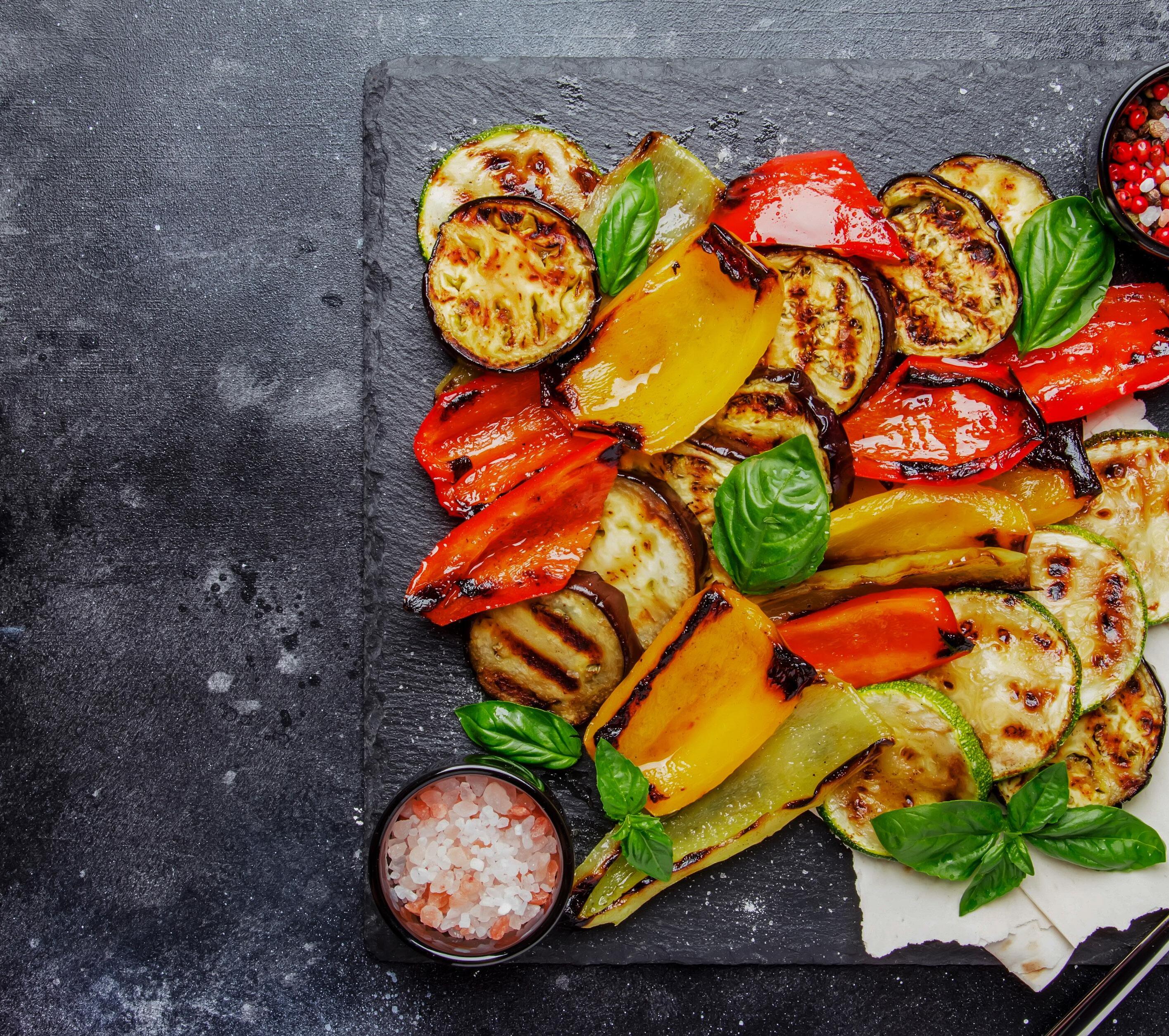
What You’ll Need
∙ 1 cup diced pumpkin
∙ 1 medium eggplant, cubed
∙ 1 red capsicum, sliced
∙ 1 courgette, sliced
∙ 2 ripe tomatoes, diced
∙ 2 fresh green chillies, finely chopped (adjust to taste)
∙ 1 red onion, thinly sliced
∙ 1/4 cup olive oil
∙ 2 tablespoons balsamic vinegar
∙ Salt and pepper, to taste
∙ Fresh basil leaves, for garnish
Method
Preheat your oven to 200°C. Spread the diced pumpkin on a baking sheet. Drizzle with a tablespoon of olive oil, sprinkle with salt and pepper, and toss to coat. Roast in the preheated oven for about 20-25 minutes, until the pumpkin is tender and slightly caramelised.
While the pumpkin is roasting, heat a grill pan or barbecue. Toss the eggplant, courgette, and capsicum with a bit of olive oil and grill until they have nice grill marks and are tender, for about 8-10 minutes. Remove from heat and set aside.
In a large mixing bowl, combine the diced tomatoes, chopped green chillies, and red onion.
In a small bowl, whisk together the remaining olive oil, balsamic vinegar, salt, and pepper to make the dressing.
Once the roasted pumpkin, grilled eggplant, courgette, and capsicum have cooled slightly, add them to the bowl with the other veggies. Drizzle the dressing over the top.
Gently toss all the ingredients together to ensure they are coated with the dressing. Taste and adjust the seasoning if needed. Tear a few fresh basil leaves and scatter them over the top.
41
Kings Top Tip
Flowers And Perennials
Refresh your pots by replacing finished winter annuals with spring annuals such as snapdragons, petunias, and marigolds. Plant lavender in a sunny spot with Living Earth Garden Mix in the ground or Kings Container Mix in pots. Keep your flowering plants looking their best with regular deadheading and feed them with Kings Fast Food. Sow flower seeds like alyssum, marigold, and cosmos to keep the bees happy and well-fed.

YOUR SPRING GARDEN TO-DO LIST


Fruit
As fruit trees start to produce new foliage in preparation for the upcoming season, feed them with Aquaticus Organic Garden Booster. Prune feijoa and passionfruit vines to encourage new growth. Get citrus, peaches, plums, nectarines, apples, and pears planted into the ground. If you have limited space, try planting dwarf varieties in large pots. Now is the time to plant strawberries for Christmas pavlova.
Veggies
Get your garden ready for spring growth by clearing away those pesky weedsthey'll only be a bigger hassle next month!
Enhance your soil with a boost of nutrients, working in Aquaticus Organic Soil and Plant Conditioner, Kings Sheep Pellets, or Kings Compost to promote healthy microbes. Get ready to enjoy delicious homegrown tomatoes by planting grafted varieties in warm, sheltered spots, or keep potted plants protected from the wind until mid-spring. Sow seeds! Plant carrot and parsnip directly into your beds. Sow tomato, zucchini, cucumber, basil, eggplant, chilli, and capsicum into seedling trays indoors and place in a warm, sunny spot.
September
The freesias are starting to pop up, the bees are buzzing once more, and new life is emerging all around us. Take advantage of the soft soil and sunny days; get out in the garden and embrace this exciting season.
42
Pin me to the wall!
Indoor Plants
Spring is the perfect time to repot indoor plants that have outgrown their pots. Keep a close eye on watering as the weather warms up. Snip off old, browning leaves that may have appeared during winter. If your indoor plants have been stretching towards the light, give them a little turn each week to correct the lean.
General Tasks
After daffodils and tulips finish flowering, deadhead them to save their energy for next year. Prepare trellises and netting for climbing peas, beans, pumpkins, cucumbers, and melons. Plan your garden composting for the coming season and consider getting a green bin for excess waste. Sharpen up your gardening tools and replace worn-out tools and gloves to get ready for the growing season. Return plastic plant punnets (rinsed) to a Kings swap-apot bin for reuse/recycling.

Kings Rose Food
Make sure your roses are well-fed in spring and summer while flowering with Kings Slow-Release Rose Food.

Lawns
Create new lawns or repair damaged areas by sowing grass seed now. For established lawns, give them a boost with Yates Weed 'n' Feed. Be careful fertilising your new lawn as many fertilisers are too strong and can burn fresh growth. As the weather warms, adjust your lawn mower setting and gradually cut the grass shorter as spring progresses.

Trees And Shrubs
Find a sunny spot with well-draining soil to plant roses and feed existing ones with Kings Rose Food for their upcoming growth spurt. Mulch around fruit trees, shrubs, and hedging to retain moisture as the weather warms. Get hydrangeas planted now for stunning summer blooms.
Grow well with these
Living Earth Garden Mix

A quality mix perfect for perennials, shrubs, trees and ornamentals. Mix in with your original soil or use on its own.
Tui Quash
Keep slugs and snails off your flowers and veggies with reliable pellets that are safer for use around pets.
SEPTEMBER ESSENTIALS
43
Flowers And Perennials
Create stunning displays in tall pots and hanging baskets with petunia, lobelia, and alyssum. Fill gaps in the garden with taller annuals like snapdragons, marigolds, and gazanias. Deadhead spent flowers and use Yates Thrive Flower and Fruit Food for stronger plants and blooms.
YOUR SPRING GARDEN TO-DO LIST October

Fruit
Give established fruit trees a boost with Kings Citrus and Fruit Tree Fertiliser. For potted citrus, use Kings

Slow-Release Citrus Food. Plant rhubarb in sunny spots on healthy beds of Kings
Compost and Kings Sheep Pellets. Prepare for a delicious summer harvest by planting raspberries and blueberries in rich soil mixed with Kings
Compost. Plant different varieties of blueberries in the same garden for cross-pollination. Get new passionfruit vines planted from October onwards. Choose a sunny, north-facing spot with welldraining soil. Plant out melon seedlings when the risk of frost and cold temperatures has passed.
Veggies
Add nutrients to your empty garden beds with Kings
Compost and Kings Organic Vegetable Fertiliser. Protect your new seedlings from slugs and snails using Tui Quash –it's kid and pet-safe.
Your favourite summer veggie seedlings will start arriving instore this month, so make sure to grab your tomatoes, chillies, basil, beans, and eggplants.

There’s still time to get summer seeds in, but make sure to check dates when reusing previous years’ packets. After three years seed is much less viable.
Don’t forget to label your seeds and seedlingsespecially if you’re growing different cultivars of the same plant. This will come in handy so you know what works and what needs more care next year.
44
As October arrives, the garden brings us lots of opportunities to sow and grow. Labour Weekend marks the turning point for summer crops, presenting the ideal moment to dive into garden tasks. Pin
me to the wall!
Indoor Plants

As new growth appears, start making cuttings and propagating your indoor plants. Start fertilising with Kings House Plant Food, or for larger, more established indoor plants, use Kings House Plant Slow-Release Food. Keep an eye on watering, as warmer weather often means more frequent watering is needed. Most indoor plants only need water when the soil becomes dry, but ensure fittonia, ferns, and carnivorous plants stay moist.
Lawns Get the lawn picnic-perfect for those summer guests. Fertilise and tackle broadleaf weeds with Yates Weed ‘n’ Feed. Spot spray those tougher weeds. Sow grass seed in patchy areas with Living Earth More Than Lawn Mix for successful germination.
General Tasks
Tend to your veggie beds, and use a garden kneeler pad for extra comfort. Stake your tomatoes' laterals with sturdy bamboo stakes. Introduce companion plants around your veggies and shrubs to naturally ward off pests.
Yates Weed ‘n’ Feed
Feed your established lawn and kill off any broad-leaf weeds. Attach to a hose, and spray on a sunny day.


Kings Slow-Release House Plant Food Feed your houseplants for up to six months, promoting healthy growth of all foliage, and enhances flowers.

Trees And Shrubs
Plant roses in sunny spots using Living Earth Garden Mix or Kings Compost for growth stimulation. Get hydrangeas in now, they grow well in dappled shade and can tolerate the south side of fences and houses. Mulch shrubs like roses, daphne, camellias, vireyas, gardenias, and pieris with Living Earth More Than Mulch and feed them with Aquaticus Organic Garden Booster.
Grow well with these
Grosafe FreeFlo Copper
OCTOBER ESSENTIALS
Easy to use, this spray controls a wide range of fungal and bacterial diseases.
45
The wind down to Christmas is fast approaching, but the garden is buzzing with life! Keep an eye on your plants needs so they continue to grow well throughout the upcoming holiday season. Pin me to the wall!

YOUR SPRING GARDEN TO-DO LIST

Flowers And Perennials
Check out our huge variety of beautiful blooms for pots and gardens, including dianthus, dahlias, salvias, zinnias, snapdragons, and verbenas. Start potted plants off right with Kings Container Mix or Tui Pot Power.
Fruit Plant passionfruit in a sunny, warm area against a fence or frame. Prune occasionally for good airflow and to prevent bacterial infections. If space is an issue, opt for dwarf citrus in pots –they only reach 1.5 to 2 metres tall. Save water sustainably by reusing greywater from ecofriendly soap for your thirsty fruit trees. Keep an eye on your strawberries to enjoy plenty for summer smoothies before the blackbirds do!
Veggies
Plan your summer harvest strategically by staggering your planting –aim for a two-week gap between crops. It's the best time to get beans, tomatoes, chillies, capsicums, eggplant, courgettes, cucumber, and kumara in the ground. Get a potted herb garden started now. Mint is great in containers as it can get out of hand in gardens. Remember to water, weed, and feed your veggies with Kings Fast Food, while tomato plants can enjoy Kings Tomato Food. For an organic option, try Aquaticus Organic Garden Booster. Mulch veggie beds with pea straw to improve water retention in the soil.

November
46
Indoor Plants
Repot indoor plants in mid to late spring –do some research on the best mix for your species or chat to our team instore. Ensure enough humidity (around 60-70%) for tropical plantsif you have less, put rocks in the bottom of your saucers before filling them with water. Cut back any spent flowers. With moth orchids, snip back just above the first or second node.
General Tasks
Boost finishing spring flowers and sprouting summer bulbs with a little Kings Bulb Food. Attract bees and create a buzzing garden by planting comfrey, borage, cosmos, lavender, and salvia near fruit trees and veggie gardens. Use healthy leaf litter as mulch under large trees –it also provides a foraging spot for birds.
Lawns
Water your lawn regularly with tank water or greywater for a more sustainable approach. Late spring is your last chance to get the lawn sorted –plant any seed before the summer heat sets in. Keep grass low around plants and mulch around trees to suppress weeds.
Trees And Shrubs Stop and smell the roses –most will be in full bloom! Enjoy yours now and discover new favourites for next year. Bring vining plants with vibrant blooms into your garden, like star jasmine, mandevilla, and bougainvillea. Add a tropical touch to your garden with the stunning summer blooms of hibiscus, available in stores at the end of the month.
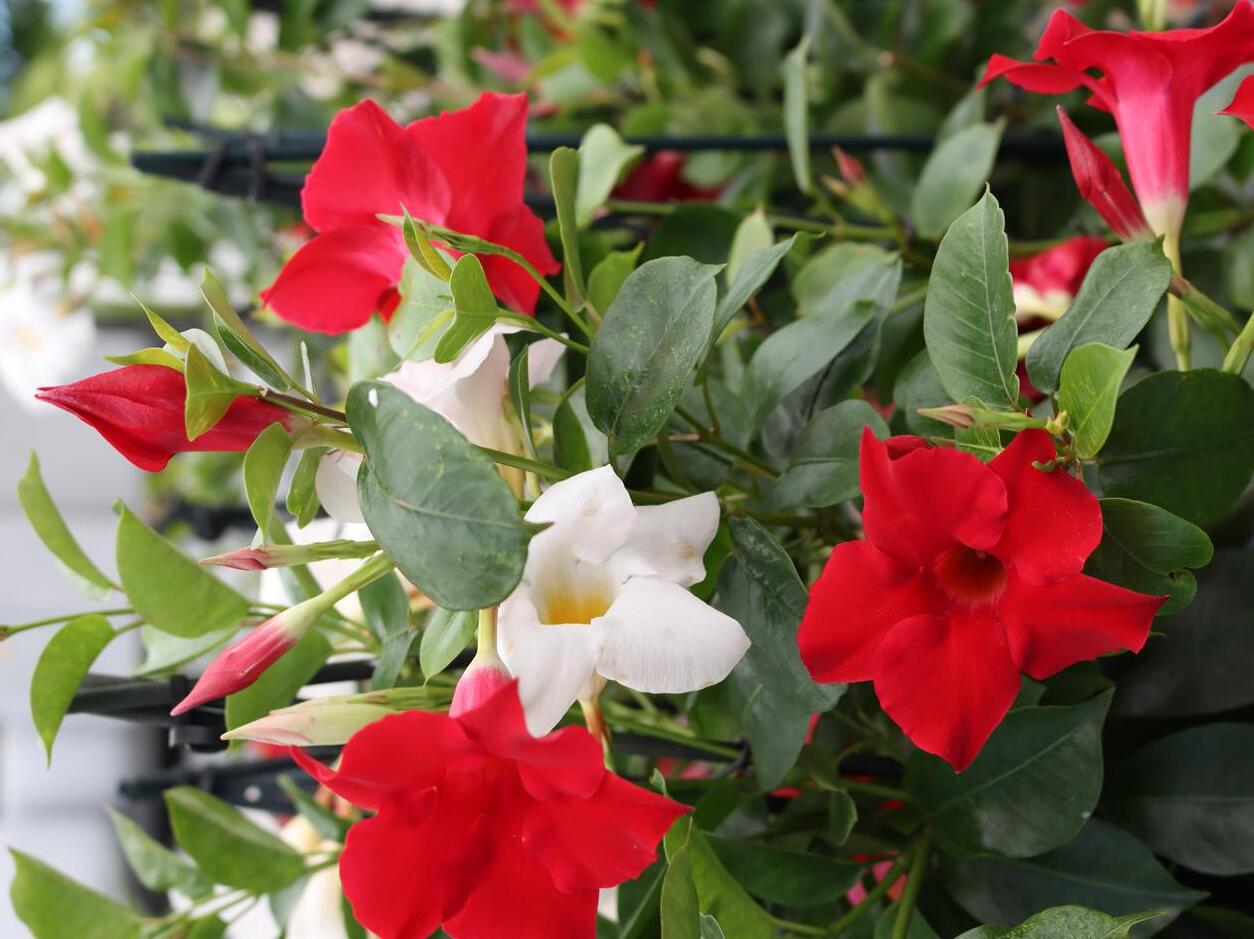
Grow well with these
Kings Container Mix Kings Container Mix is great for using on trees, shrubs, hanging baskets, and any edibles that prefer moist soil.

Pea Straw & Lucerne
Apply around your plants to help suppress weeds, add organic matter, and prevent the soil from drying out.

Kings Tomato Food Feed well to ensure a good crop. Great for feeding tomatoes, chillies, peppers eggplants, and courgettes.
NOVEMBER ESSENTIALS

47
Love Plants? Join the club! Signing up is easy! Ask instore at checkout or go to kings.co.nz Earn points so you can buy more plants $1 = 1 point, earn 300 points and score yourself a $10 voucher! Be the first to know Early alerts for sales, new arrivals and the latest plant news and tips. Wednesdays are wonderful if you're 65+ 10% off plants every Wednesday for SuperGold card holders. Exclusive specials & events just for you Personalised offers plus weekly member only deals & event invites. Helping you grow well Score yourself a birthday freebie! Get a $10 voucher on your birthday to spend instore or online.





















 Star Jasmine
Star Jasmine












































































 Gardena Flex Timer
Egmont Magic Mulch With Seaweed
Gypsum ClayBreaker Kings Sheep Pellets
Aquaticus Organic Garden Booster
Aquaticus Soil & Plant Soil Conditioner
Tui Mulch & Feed
SaturAid Plastic Watering Can
The Gardener Soaker Hose
Living Earth More than Mulch
Gardena Flex Timer
Egmont Magic Mulch With Seaweed
Gypsum ClayBreaker Kings Sheep Pellets
Aquaticus Organic Garden Booster
Aquaticus Soil & Plant Soil Conditioner
Tui Mulch & Feed
SaturAid Plastic Watering Can
The Gardener Soaker Hose
Living Earth More than Mulch









 Calla Lilies
Calla Lilies




 Caribbean Fantasy
Blue Bayou Red Pygmy
Franz Kafka Kelvin Floodlight
Caribbean Fantasy
Blue Bayou Red Pygmy
Franz Kafka Kelvin Floodlight



































